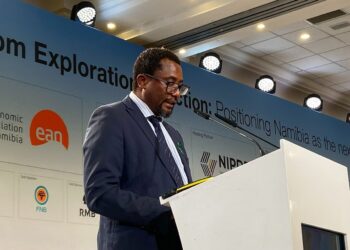
The World Economic Forum (WEF) identifies poverty and inequality as Namibia’s most pressing risks for 2025.
The WEF Global Risks report, based on a survey of over 11,000 respondents, highlights economic struggles, resource shortages and a lack of skilled labour as key concerns for the country.
“Risk 1 indicates the most frequently selected risk in each economy. Tied risks are presented in alphabetical order, with the tie indicated by numbering,†the report read.
The survey asked respondents to select the five biggest risks likely to impact their country within the next two years from a list of 34 global threats.
In Namibia, the report further says that unemployment or lack of economic opportunity ranks in second place.
Water supply shortages emerged as the third biggest concern, while food supply shortages ranked fourth. Lastly, a labour and talent shortage were identified as the fifth most pressing issue.
According to Economist at Cirrus Capital, Oliver Diggle, water scarcity, ranked third in Namibia, is not a new issue.
The country suffered severe drought conditions in 2024, leading to the second-worst year for crop farming in recent history, surpassed only by 2019.
Unemployment is Namibia’s second-biggest risk, and recent data has only reinforced these concerns.
Diggle said that the 2023 Labour Force Survey revealed that broad unemployment has increased to an alarming 54.8%, indicating a worsening economic landscape.
Despite Namibia’s high expenditure on education relative to GDP, the country continues to struggle with poor education outcomes and a shortage of skilled labour.
“A lack of skilled labour is also identified as a critical issue holding Namibia back, and although Namibia is among the highest spenders on education relative to GDP worldwide, outcomes remain weak. The majority of this expenditure goes towards personnel costs, peaking at 94% of total expenditure in FY 2017/18,†he said.
He further explained that, unlike some global economies where geopolitical or technological risks are major concerns, Namibia’s risk outlook remains rooted in practical, immediate challenges such as economic opportunity, resource shortages, and employment.
Nevertheless, Namibia’s risk profile mirrors that of its neighbouring countries, where economic hardships and resource shortages dominate concerns.
Poverty and inequality are widespread in the region. Water and food shortages are also major concerns, particularly in Zambia and Zimbabwe, where they rank among the top three risks.











